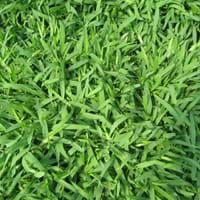Life Span
Perennial
Perennial
Origin
Hybrid origin, Mexico, Central America, South America
Southeastern United States, California, Caribbean
Types
Not Available
Not Available
Habitat
Coastal Regions
marshes, Swamps, Tropical Climate
USDA Hardiness Zone
11-15
8-11
AHS Heat Zone
12-1
12 - 9
Sunset Zone
A1, A2, A3, H1, H2, 1a, 1b, 2a, 2b, 3a, 3b, 4, 5, 6, 7, 8, 9, 10, 11, 12, 13, 14, 15, 16, 17, 18, 19, 20, 21, 22, 23, 24
H1, H2, 12, 13, 18, 19, 20, 21, 22, 23, 24
Habit
Upright/Erect
Mat-forming
Minimum Width
Not Available
Flower Color
Yellow
Not Available
Flower Color Modifier
Bicolor
Bicolor
Fruit Color
Red
Non Fruiting Plant
Leaf Color in Spring
Green, Dark Green
Green
Leaf Color in Summer
Green, Dark Green
Light Green
Leaf Color in Fall
Green, Dark Green
Green
Leaf Color in Winter
Green, Dark Green
Green
Leaf Shape
Ovate
Fin-shaped Tufts
Plant Season
Spring, Summer, Fall
Spring, Summer, Fall, Winter
Sunlight
Full Sun
Full Sun, Partial Sun
Type of Soil
Loam, Sand
Loam, Sand
The pH of Soil
Neutral
Acidic, Neutral, Alkaline
Soil Drainage
Well drained
Well drained
Bloom Time
Indeterminate
Indeterminate
Tolerances
Drought
Pollution, Salt, Soil Compaction
Where to Plant?
Container, Ground
Ground
How to Plant?
Grafting, Seedlings
Plugs, Sod, Sprigs
Plant Maintenance
Medium
Medium
Watering Requirements
Needs more water during establishment
Average Water Needs
In Summer
Lots of watering
Lots of watering
In Spring
Moderate
Moderate
In Winter
Average Water
Average Water
Soil pH
Neutral
Acidic, Neutral, Alkaline
Soil Type
Loam, Sand
Loam, Sand
Soil Drainage Capacity
Well drained
Well drained
Sun Exposure
Full Sun
Full Sun, Partial Sun
Pruning
Pinch or prune as they grow to promote branching and bushiness
Remove damaged leaves, Remove dead branches, Remove dead leaves
Fertilizers
14-14-14 Fertilizer, Compost
All-Purpose Liquid Fertilizer
Pests and Diseases
Anthracnose, Aphids, Red blotch, Rust
Red blotch
Plant Tolerance
Heat Tolerance, Salt and Soil Compaction
Drought
Flowers
Showy
Insignificant
Flower Petal Number
Single
Single
Fragrant Bark/Stem
Yes
No
Foliage Texture
Medium
Medium
Foliage Sheen
Matte
Glossy
Attracts
Aphids, Not Available, Squirrels
Not Available
Allergy
Stomach pain, Vomiting
Congestion, Itchiness, sneezing
Aesthetic Uses
Used in parkland
Beautification
Beauty Benefits
Anti-ageing, Blackheads, Reduce Bruises
Not Available
Environmental Uses
Shadow Tree, Soil protection
Air purification
Medicinal Uses
Dehydration, Diabetes, Diarrhea, Nutrients, Weight loss
Not Available
Part of Plant Used
Fruits
Not Available
Other Uses
Application in Handicrafts, Food for animals, Showy Purposes
Used in lawns and turf
Used As Indoor Plant
No
No
Used As Outdoor Plant
Yes
Yes
Garden Design
Edible, Herb, Vegetable
Lawns and Turf
Botanical Name
Manilkara zapota
STENOTAPHRUM secundatum
Common Name
sapodilla , chikoo, Sapota
Softleaf Buffalo Grass, St. Augustine Grass
In Hindi
चीकू
St. Augustine Grass
In German
Breiapfelbaum
St. Augustine Grass
In French
Sapotillier
St. Augustine Grass
In Spanish
chicle
St. Augustine Grass
In Greek
sapodilla
St. Augustine Grass
In Portuguese
sapodilla
St. Augustine Grass
In Polish
Pigwica właściwa, sapodilla
St. Augustine Grass
In Latin
sapodilla
St. Augustine Grass
Phylum
Magnoliophyta
Magnoliophyta
Class
Magnoliopsida
Liliopsida
Family
Sapotaceae
Poaceae
Genus
Abelia
Stenotaphrum
Clade
Angiosperms, Asterids, Eudicots
Angiosperms, Commelinids, Monocots
Subfamily
Sapotoideae
Panicoideae
Season and Care of Sapodilla and St. Augustine Grass
Season and care of Sapodilla and St. Augustine Grass is important to know. While considering everything about Sapodilla and St. Augustine Grass Care, growing season is an essential factor. Sapodilla season is Spring, Summer and Fall and St. Augustine Grass season is Spring, Summer and Fall. The type of soil for Sapodilla is Loam, Sand and for St. Augustine Grass is Loam, Sand while the PH of soil for Sapodilla is Neutral and for St. Augustine Grass is Acidic, Neutral, Alkaline.
Sapodilla and St. Augustine Grass Physical Information
Sapodilla and St. Augustine Grass physical information is very important for comparison. Sapodilla height is 150.00 cm and width 60.00 cm whereas St. Augustine Grass height is 760.00 cm and width Not Available. The color specification of Sapodilla and St. Augustine Grass are as follows:
Sapodilla flower color: Yellow
Sapodilla leaf color: Green and Dark Green
St. Augustine Grass flower color: Not Available
- St. Augustine Grass leaf color: Green
Care of Sapodilla and St. Augustine Grass
Care of Sapodilla and St. Augustine Grass include pruning, fertilizers, watering etc. Sapodilla pruning is done Pinch or prune as they grow to promote branching and bushiness and St. Augustine Grass pruning is done Remove damaged leaves, Remove dead branches and Remove dead leaves. In summer Sapodilla needs Lots of watering and in winter, it needs Average Water. Whereas, in summer St. Augustine Grass needs Lots of watering and in winter, it needs Average Water.





